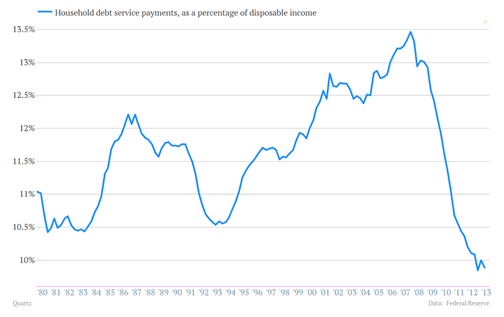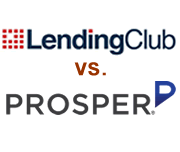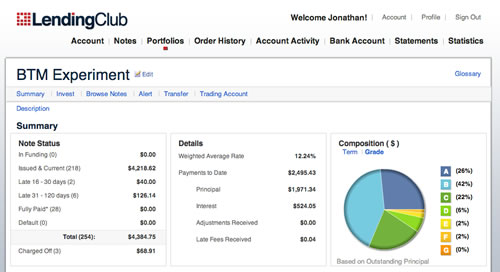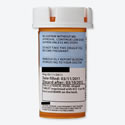Here is an interesting Quartz article by Matt Phillips outlining “the most important change in the US economy since the Great Recession that nobody is talking about”. I don’t know about that, I’ve seen a lot of these charts before. But many include more recent data, and below are a few of the notable ones. (Note the truncated scales on several of the vertical axes.)
The overall theme is that household debt levels appear to be settling at a more sustainable level. Household debt service payments as a percentage of disposable income are at their lowest levels in over 20 years:
Breaking this down a bit, we see that total US credit card debt has been dropping pretty consistently since 2009 and remains lower than 2003 levels:

 After posting
After posting 
 You’ve probably heard the adage “pay yourself first”. Well, now there is a website that will help you essentially tax yourself first. Recently mentioned in Businessweek magazine, SavedPlus.com tracks your spending and automatically transfers a set percentage of whatever you spend into your savings account.
You’ve probably heard the adage “pay yourself first”. Well, now there is a website that will help you essentially tax yourself first. Recently mentioned in Businessweek magazine, SavedPlus.com tracks your spending and automatically transfers a set percentage of whatever you spend into your savings account.  The U.S. Treasury recently announced that participants in Healthcare Flexible Spending Accounts would now be able to carry over $500 of unused funds into the next year, but only if your employer chooses to allow it. Employers can allow either a 2.5 month grace period after the end of the year or the $500 rollover, but not both. Or they could be punks and offer neither. This could start as early as this year for 2013 funds.
The U.S. Treasury recently announced that participants in Healthcare Flexible Spending Accounts would now be able to carry over $500 of unused funds into the next year, but only if your employer chooses to allow it. Employers can allow either a 2.5 month grace period after the end of the year or the $500 rollover, but not both. Or they could be punks and offer neither. This could start as early as this year for 2013 funds.  Google announced a few days ago that third-party apps will no longer work with Google Voice as of May 15, 2014. I already updated my
Google announced a few days ago that third-party apps will no longer work with Google Voice as of May 15, 2014. I already updated my 
 One more quick savings bond update… the official rate for new I Savings Bond was
One more quick savings bond update… the official rate for new I Savings Bond was  Investment research firm Morningstar rates 529 plans in their annual “529 College Savings Plans Research Paper and Industry Survey”. They recently announced their
Investment research firm Morningstar rates 529 plans in their annual “529 College Savings Plans Research Paper and Industry Survey”. They recently announced their  The Best Credit Card Bonus Offers – March 2024
The Best Credit Card Bonus Offers – March 2024 Big List of Free Stocks from Brokerage Apps
Big List of Free Stocks from Brokerage Apps Best Interest Rates on Cash - March 2024
Best Interest Rates on Cash - March 2024 Free Credit Scores x 3 + Free Credit Monitoring
Free Credit Scores x 3 + Free Credit Monitoring Best No Fee 0% APR Balance Transfer Offers
Best No Fee 0% APR Balance Transfer Offers Little-Known Cellular Data Plans That Can Save Big Money
Little-Known Cellular Data Plans That Can Save Big Money How To Haggle Your Cable or Direct TV Bill
How To Haggle Your Cable or Direct TV Bill Big List of Free Consumer Data Reports (Credit, Rent, Work)
Big List of Free Consumer Data Reports (Credit, Rent, Work)